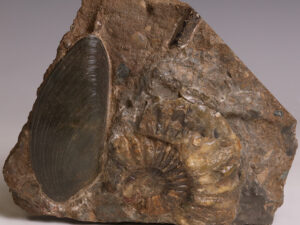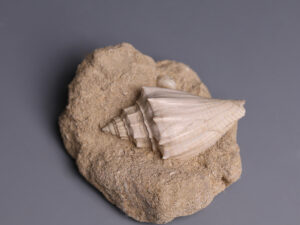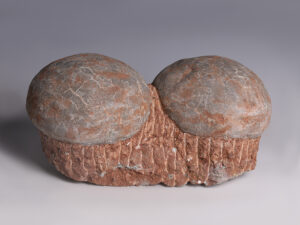Ammonites are part of the cephalopod family, along with Nautiloids (shell dwelling creatures) and Coleoids (shell-less mollusks, like squid and octopuses). Although Ammonites look similar to Nautiloids, both species inhabit a coiled shell, they are actually believed to be more closely related to Coleoids. Ammonites were born with one tiny shell and built new chambers as they grew – thereby creating the segmented shell that can be seen here. They would have moved into the new chamber, sealing off the older, smaller chambers – these older chambers were also filled with gas, allowing the ammonite to control its buoyancy.
Ammonites first appeared around 450 million years ago, during the Paleozoic Era, and became extinct around 66 million years ago, at the end of the Cretaceous period. The last ammonites became extinct at the same time as the dinosaurs, in a mass extinction called the Cretaceous-Paleogene extinction, which is believed to have been caused by an asteroid colliding into Earth.
















